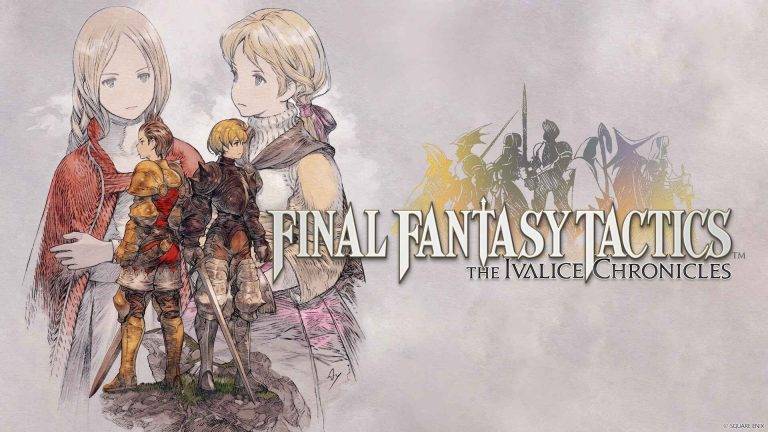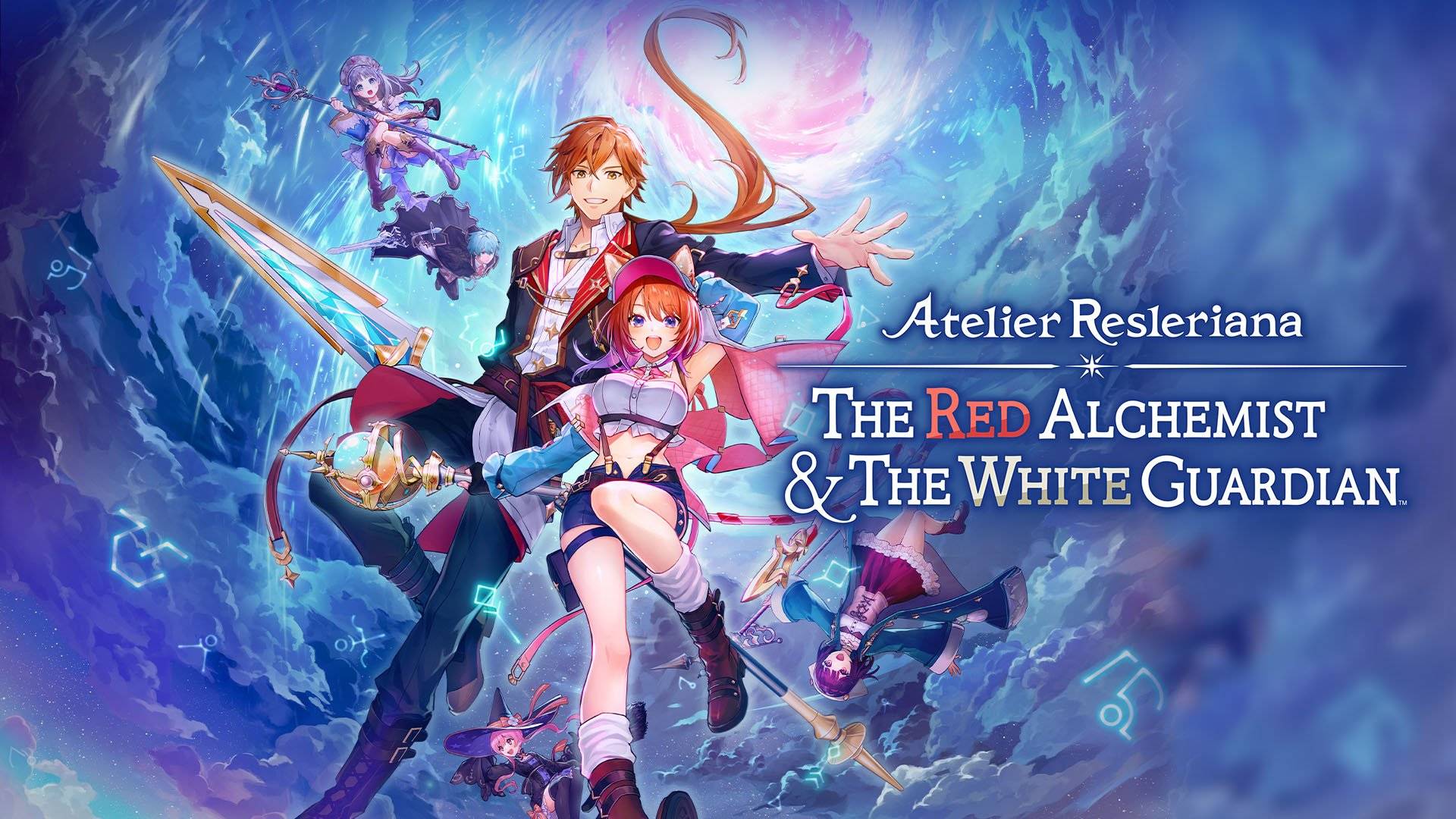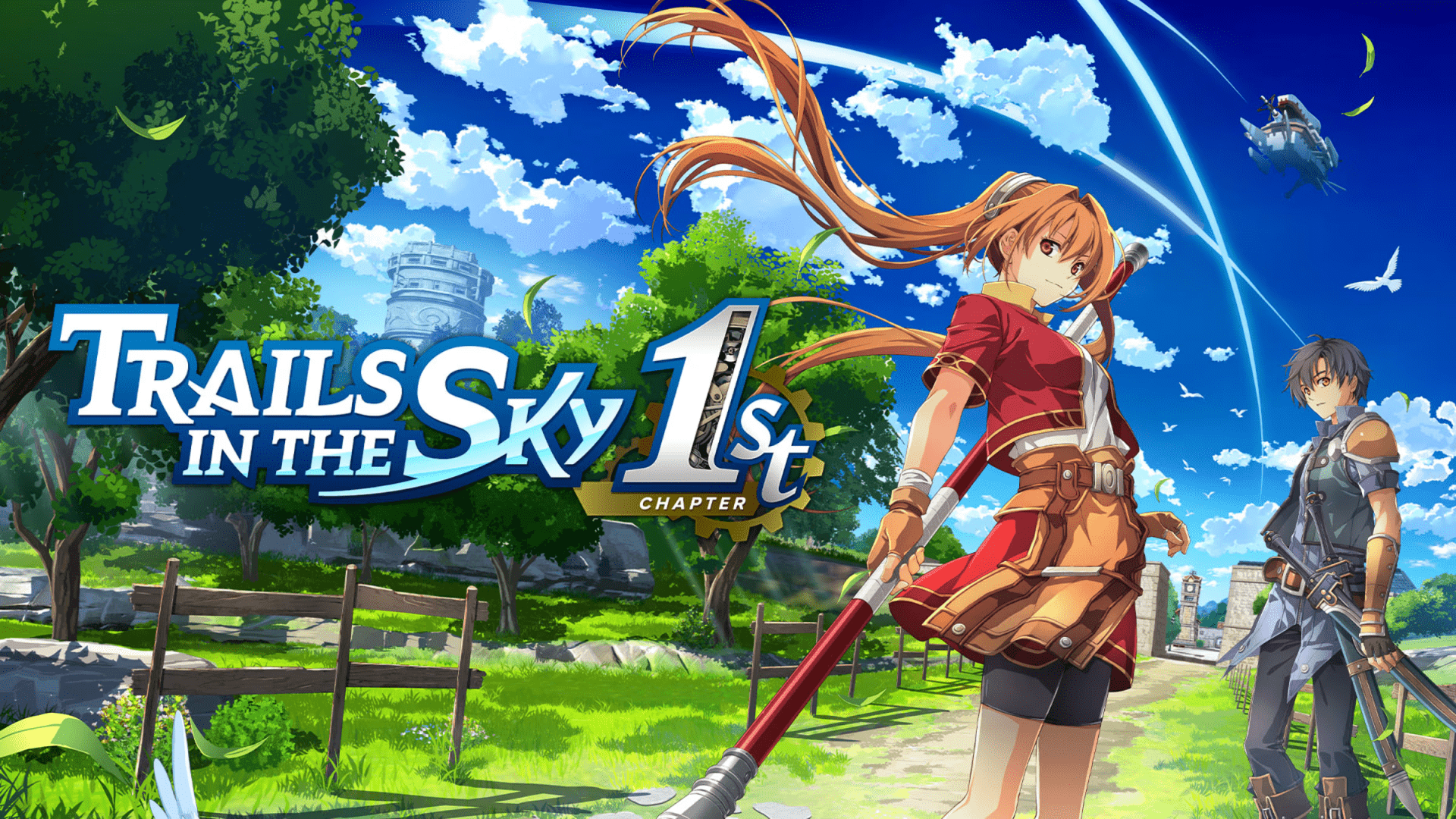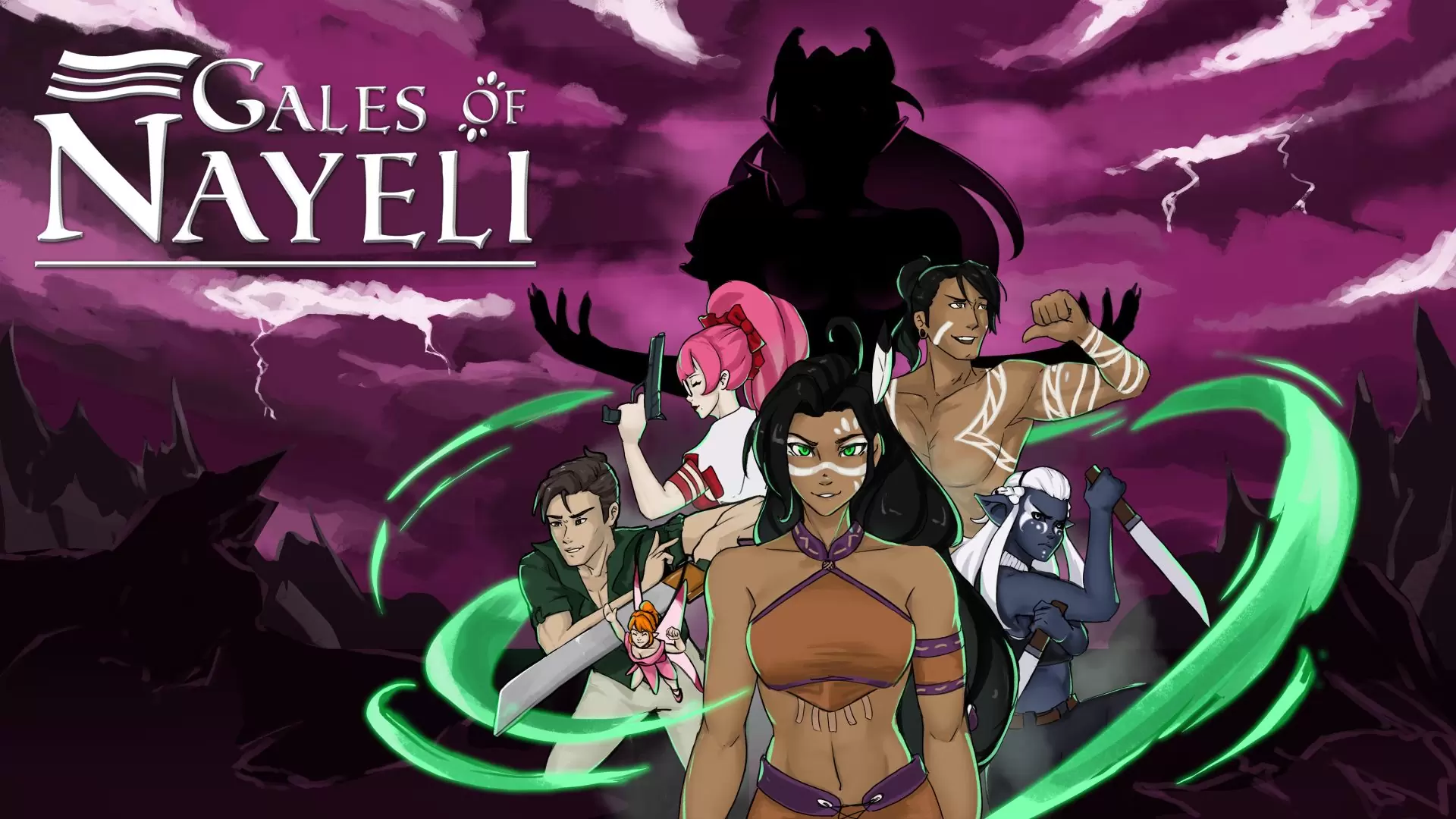War and Politics Comes Alive with Voice Acting – Final Fantasy Tactics – The Ivalice Chronicles Review
Final Fantasy Tactics – The Ivalice Chronicles is the latest remaster of the original Final Fantasy Tactics. It’s a blast to play through with its biggest new feature being full voice acting in all story scenes of the game. If you’re looking to get into the Final Fantasy Tactics series or even just tactical/strategy JRPGs in general then this is a great entry point. There aren’t too many tactical JRPGs nowadays, and I’d call Final Fantasy Tactics one of the three pillars of the tactical JRPG genre alongside Fire Emblem, Disgaea, and many other smaller indie games.
Compared to its contemporaries the most unique part of Final Fantasy Tactics is its writing from Yasumi Matsuno. The setting is medieval with fantasy elements and the script, very broadly speaking, reads like a Shakespearean play or an old version of English. I’ve played through many games over the years but it’s rare to see writers putting dialog in this kind of style but it’s a welcome addition and really makes the title stand out. Final Fantasy 12 was a mainline Final Fantasy game featuring Matsuno’s writing and it really showed, having a really unique script and English dub compared to all of the other Final Fantasy games.
The script has been redone since the original PS1 version and although there’s just a few dialog lines that don’t pack the same punch as the original most of the dialog is easier to read and the sentences flow significantly better while still having that old English style. If you’re afraid of the dialog being difficult to understand it’s not at all. At some points it’s even downright hilarious watching the protagonist and villain go back and forth spouting politics. Matsuno actually has a political science degree and when you play the game the story isn’t really farfetched, featuring many real life war acts such as false flags. Matsuno’s education definitely shows in the game and his real life story isn’t too dissimilar to Hidetaka Miyazaki, who had quit a job at Oracle to join FromSoftware. These developers really know how to make a good game. With most fantasy games I get taken out of it because the plot is too unbelievable but with Final Fantasy Tactics the plot is pretty reasonable and the characters don’t have plot armor at all.
I’ll give a quick premise of the game’s story without any spoilers past the half hour mark. You play as Ramza Beoulve, a knight-in-training and a part of the Beoulve House. He’s the younger of his two brothers (Zalbaag and Dycedarg) and he has a younger sister, Alma, as well. Ramza and his sister have a different mother than his two older brothers. Their mother is a commoner and technically Ramza is illegitimate but his brothers try to treat him as an equal.
Ramza is both of noble and commoner blood making him a really unique protagonist and the opposite of a hero born with titles and prestige. To give Ramza a friend his brothers allow Delita, a commoner from birth, attend knight school alongside him. As a knight-in-training Ramza and Delita find themselves immersed in a big political plot involving rebellions from commoners, who argue that nobles are taking too much from them. Some of the townsfolk take nobles hostage and the plot keeps going off the rails from there.

It’s not the perfect remaster because it unfortunately takes out content from War of the Lions, which was the first remaster of the game (with this game, Ivalice Chronicles, being the second remaster). Content not included includes many cameos such as side quests featuring Balthier and Luso which had quick storylines for recruiting them and them being unique playable units with unique classes after their side quest.
The only side quests in this latest remaster are all those featured in the original PS1 version of the game, such as the Cloud & Aerith side quest line with Mustadio’s quest as well as the Midlight’s Deep optional (post-game) dungeon that has a post-game optional boss.

Even if you played the original the added voice acting is a real treat to listen to. It adds a lot of immersion to the scenes. Some characters have voice actors who do have a habit of overacting but in general the voice direction is top notch. I won’t spoil who the villains are since the game has many twists but the villains really give a great performance and really make you hate them. Don’t get me wrong, I disliked the villains before for their heinous acts but actually hearing them voice their dialog really made me mad (in a good way).
I really liked how the characters say the swear word for legitimate child, it really feels like a scary medieval period where nobles and commoners are clearly distinct. Nowadays many publishers try to soften a game’s script to get as low of an age rating as possible but this game sticks to its roots. The game has very rich lore as well as many codex entries to read.
Compared to the original game I also found it easier to trigger conversations in battle which has voice acting as well. Some of the in-battle dialog can get a bit long-winded at times especially when you’re in the heat of battle but you can always fast forward through it if it’s not for you. Unique characters you recruit will also have extra scenes where they’ll talk to the villain if you bring them in battle.
The in-battle dialog sound effects is great with your generic units screaming spells or crying in pain when they fall in battle. I noticed that it’s a bit random too if they scream after falling in battle compared to the original where the sound effect was played 100% of the time, but I think that the developers didn’t want you to hear it too much. This reminds me of Xenoblade Chronicles 2’s overused dialog such as certain enemies constantly screaming “Don’t forget me!” that had to be patched to reduce the sound effect frequency.
I wish that the “auto” dialog button would automatically proceed the dialog in all scenes instead of having to re-press it every new scene because sometimes you’d see 5 scenes in a row early on and mid-game. The game is very tutorial heavy in its opening hours to get your acquainted with the genre. I really didn’t like all the tutorials. I personally think the tutorials were too excessive but I don’t blame the developers for putting them in as this genre of game is very niche and they wanted to introduce this kind of game to a modern audience. Once you get past the first few hours of the game it’s generally tutorial free with just a new mechanic being introduced every once in a while.
There are 3 difficulties to choose from named Squire, Knight, and Tactician which are easy, medium and hard modes. If you’re struggling you always turn down the difficulty at any time. It can even be useful for grinding.
The gameplay of Final Fantasy Tactics is that you control unique main characters as well as generic characters and you need to defeat all the enemy units on the map in a series of story missions. Sometimes they may be other kinds of objectives to win a battle but usually it’s just defeating all the enemies or just defeating the boss enemy. You control a team of 4 early game and 5 late game on a set of tiles.
Your character has stats like those you’d find in any JRPG such as HP, MP, physical attack and defense, magical attack and defense and more but in tactical JRPGs the map contains many squares on a grid similar to a chessboard. This means that you also have a movement stat for how far you can move, a jump stat for how high you can jump, as well as speed which affects turn order and how frequently the character can act.
Unlike Fire Emblem which has all your allies act and then all your enemies act, this game has a speed stat that influences turn order. This means that your allies and enemies act as soon as they’re able to without distinct player or enemy turn phases. A neat part of Final Fantasy Tactics is that a character’s next turn is slower if you move and act and it’s faster if the character doesn’t move and only acts. The fastest is if you don’t move and don’t act at all. Different kinds of spells, skills, and items all have varying speeds but you learn it as you play the game. Defending and letting the enemy come to you is a viable strategy as long as you don’t need to rescue someone!

You have a character level as well as job level. Character level affects your stats and job level increases as you get job points. Spending these job points will allow you to get more abilities relating to your job. Say you have an alchemist whose unique feature is throwing items. At the start you can only throw basic potions but late-game as you spend your job points you can throw all kinds of hi-potions, ailment cures and phoenix downs.
The standout feature is the job system. Each character has a job and you can usually change it any time for anyone except for recruited monsters. Each job like its name suggests can use different kinds of abilities and have all kinds of specializations. For instance, a knight would be good at going directly to enemies and blocking attacks, black mages deal damage, white mages heal damage, the chemist throws items, dragoons jump on enemies, and more. This is a gross oversimplification and this game has over a dozen jobs each with their nuances.
By mastering the earlier jobs by increasing their job levels you unlock more jobs that are even more specialized. As a character learns more jobs they can equip a sub-job as well as equip certain passives from jobs they learned from as well such as reaction passives and movement passives.
You can go crazy with different combinations of jobs as well as different team compositions. It’s what helped me go through so many versions of this game. I miss the old job system that showed the character and their possible jobs in a circle. Otherwise the menus are more refined with many quality of life enhancements.
No new jobs were added in this remaster and since this remaster removed War of the Lions content there’s no Game Hunter (Luso), Sky Pirate (Balthier), Dark Knight nor Onion Knight job.
You do have to unlock jobs for each character so it can get somewhat grindy if you want the advanced jobs for all your party members. The grind is real and if you want to master more jobs grinding for job experience is an inevitability. There’s no punishment for grinding and you can grind as much as you want between story missions by triggering random encounters on map nodes.

If you don’t want to fight you can always flee non-story encounters with a 100% rate. The random encounters will scale to your level and I believe certain main story missions with monster enemies will have the monsters level scale but otherwise the story missions don’t scale.
One gameplay aspect I had forgotten about is if you recruit a monster unit they will automatically reproduce as you progress time in the game and they make new monster units, sometimes having higher and higher levels. For some reason the few end-game story fights which had monsters ended up having very high levels and skills that gave me a lot of trouble, but the majority of story fights which didn’t contain monsters that had only human characters were very easy to beat. In other words, I believe the game was level scaling monsters based off high-level monsters I had on my team from my recruited monsters reproducing even though I never used them in battle. Often my recruited chocobos were breeding like rabbits and I often had to go into the menus to clear out many newly added chocobos so as to not hit the recruited character cap to be able to add important characters such as story characters to my roster.
The monster breeding otherwise is a perfectly fine game mechanic though. You can search maps for rare monster enemies, recruit them, and use them for breeding which you can then poach and trade them in for rare equipment.
The graphics look crisp and it’s much easier to tell what the sprites were. I like the filter they used on the graphics that make the backgrounds look painted and it doesn’t look overbearing. Some of the CGI cutscenes from War of the Lions were used in this game and they look great also having a brushstroke effect similar to that of Valkyria Chronicles’ cutscenes which I really liked.

The in-game spell effects look great but they look very similar to those of the original game. I would warn you that if you’re photosensitive be careful because just like special effects from the old days (before Pokémon’s Electric Soldier Porygon episode) there is a lot of screen flashes for most of this game’s spell such as its thunder spells. They look great just like the old days and it’s actually really fun to play in the dark and watch the thunder spells light up your room, but it’s definitely not the kind of special effects you’d see from modern new game releases.
The turbo feature in the game is great and allows you to speed up battles by holding down a button though I wish there was a way to toggle it instead of having to hold it down for the entire battle. The battles, even the optional ones, last 5-10 minutes even with the turbo which does tire out your finger and wear down your controller. There’s an auto-battle feature if you want to grind but it’s not optimal play as there’s only so much a programmed AI can do. I would’ve preferred if it was easier to turn on/off the auto-battle AI such as being able to turn it on/off for all characters at once instead of having to do it one by one.
If you lose a battle you may need to reload and go through the cutscene again. There’s no “skip cutscene” button but you can fast forward through the dialog and usually it goes by fast thankfully.
Although there’s difficulty options the game still retains its tricky difficulty from the old days. There are some story scenes where you do need to do multiple battles in a row. You can save between the battles and even escape if you don’t believe you can win which prevents soft-locks, unlike the original game.
The bosses in this game are definitely on the unforgiving side with most of them spamming status ailments and insta-death spells. I had to make use of the game’s poaching feature, where you hunt rare creatures and sell them to vendors to unlock rare equipment to prevent all these status ailments. The game really expects you to be on the top of your game for some of its boss fights.
There are also enemy thieves who will steal your equipment and knights who will even break your equipment and this is permanent. You need to either make sure to equip a passive to prevent this, reload, or just buy another one of the equipment instead. In castles where you have to fight 3 or more battles in a row it’s especially dangerous since you can’t go back out to a shop without having to restart the entire sequence so you need to make sure you brought extra equipment with you or just reload the battle. You can save between each battle in a sequence so it’s not too bad.
There are de-leveling traps hidden in random tiles within random encounters, but this is actually meant for purposely lowering your level so you can re-level and grind more stats it’s not really meant to be a punishment in this case. Your characters’ stat growth rates do change depending on the job they use when leveling up so you do want to plan out broadly the kind of jobs you plan for that character to have, otherwise you’ll get a mage with barely any MP to use or a knight with barely any HP to survive any attacks.
A lower difficulty may lower a boss’s health and stats but it doesn’t change their AI which will still spam status ailments at you. I would’ve preferred if the developers toned down the enemy and boss AI on lower difficulties. I found myself making “glass cannon” kind of characters to beat the bosses quickly with all of my allies dying around me, similar to the ending of Ender’s Game…

Some battles are extremely random as well, where in one boss encounter the boss enemy had hit all my characters with status ailments but after reloading the boss would just do a normal punch to one character. Randomness isn’t inherently a bad thing but it’s certainly a stark contrast to other tactical JRPGs such as modern Fire Emblem, which is extremely deterministic in its gameplay.
The ailments are exceptionally tricky to heal in this game as well, with my white mage’s Esuna spell not being able to heal many kinds of ailments and my Remedy items also barely curing any status ailments as well. To cure confusion you had to hit a character to knock some sense into them. It’s a bit different but I understand what they were going for and I was actually able to make good use of the knight’s weak ranged “throw rock” skill.
Doom was a tricky ailment to deal with as well, where you had to have rare accessories equipped in advance (before the sequence of story battles as well) to prevent insta-death such as the Protect Ring or Ribbon. Alternatively you could hit the character with a White Staff or cast Reraise on the character but those are random and not guaranteed.
Some parts of the gameplay didn’t age well at all. I hate that buffing and resurrection spells have an accuracy percentage and can miss. I had a white mage that I spent a very long time training and when I wanted to use the Arise spell to resurrect a fallen character with full health I was getting an estimated 30% chance of it working. When I saw a character was afflicted with the Doom ailment I was smart and thought I could cast Reraise, which would revive a character upon death but again it had only a 30% chance of going through. I ended up just using my Chemist job to spam Phoenix Down which had a 100% chance due to it being an item rather than a spell but the downside is that it revived a character with very low health who would be very susceptible to being knocked out again by an enemy.
I could understand a lower chance of success if it was only a character’s subclass that had White Mage but no, my unit’s primary class was certainly White Mage. That’s why I prefer how even in hard challenge runs in modern Fire Emblem or Disgaea you can plan more effectively because healing and curing status ailments always works.
There is perma-death in this game where you have 3 turns to resurrect a character which are represented by 3 hearts, otherwise they permanently die a turn after all the hearts disappear. If this happens to a main character such as Ramza it’s a game over. I think the perma-death is very reasonable mechanic on its own but when you combine it with resurrection spells failing then it frustrates me.
Tactics Ogre, another similar tactical game made by Matsuno, had a really awful perma-death situation where if an enemy simply pushed one of your units off a cliff into a pit (which were frequently encountered in dungeons) then that character would instantly permanently die, actually bypassing the time you should’ve had to resurrect the character! Thankfully I’ve never seen this in Final Fantasy Tactics.
The only bigger nitpick I have is that the developers removed content from the War of the Lions remaster such as side quests, new characters and new classes while also introducing no new additions. It feels like a step backwards and I believe developers should offer more in its remasters if possible. The cameos were all Square Enix’s Final Fantasy characters so it’s not even as if it’s a licensing issue. I understand the developers want to remain true to the original vision of the game but it left a bad taste in my mouth. This is meant to be a remaster that is faithful to the original PS1 game, but perhaps to a harmful degree. Although Sega re-released Persona 5 and Shin Megami Tensei V each just a few years after their original release at least the developers had included substantial new additions to the game such as new fully voiced story scenes, characters and personas.
The Ivalice Chronicles really is the best way to play Final Fantasy Tactics, especially considering that the previous remaster, War of the Lions, released almost 20 years ago. I wholeheartedly believe that whether or not you’ve played the originals that the voice acting really adds a lot to the game, especially for a game that is very narrative heavy. Don’t get me wrong, Final Fantasy Tactics is a Final Fantasy game but it’s a Matsuno game first and foremost especially when you see how much political intrigue is interwoven into the game’s story.
Final Fantasy Tactics – The Ivalice Chronicles
 Our Score:
Our Score: Great
Pros
- Amazing job system allowing you to customize a team of characters in endless ways.
- Great story and characters full of political intrigue between nobles and commoners in a medieval setting. Full voice acting!
- Quality of life improvements such as menus being more organized and easier to read.
- Pacing can be slow at times and the game does have many filler missions between impactful story missions.
- Removal of War of the Lions content such as several side quests and cameo characters.
- Still is a hard and grindy game.
– Brandon Harris
Reviewed on the PC (Steam)
Recent Posts





